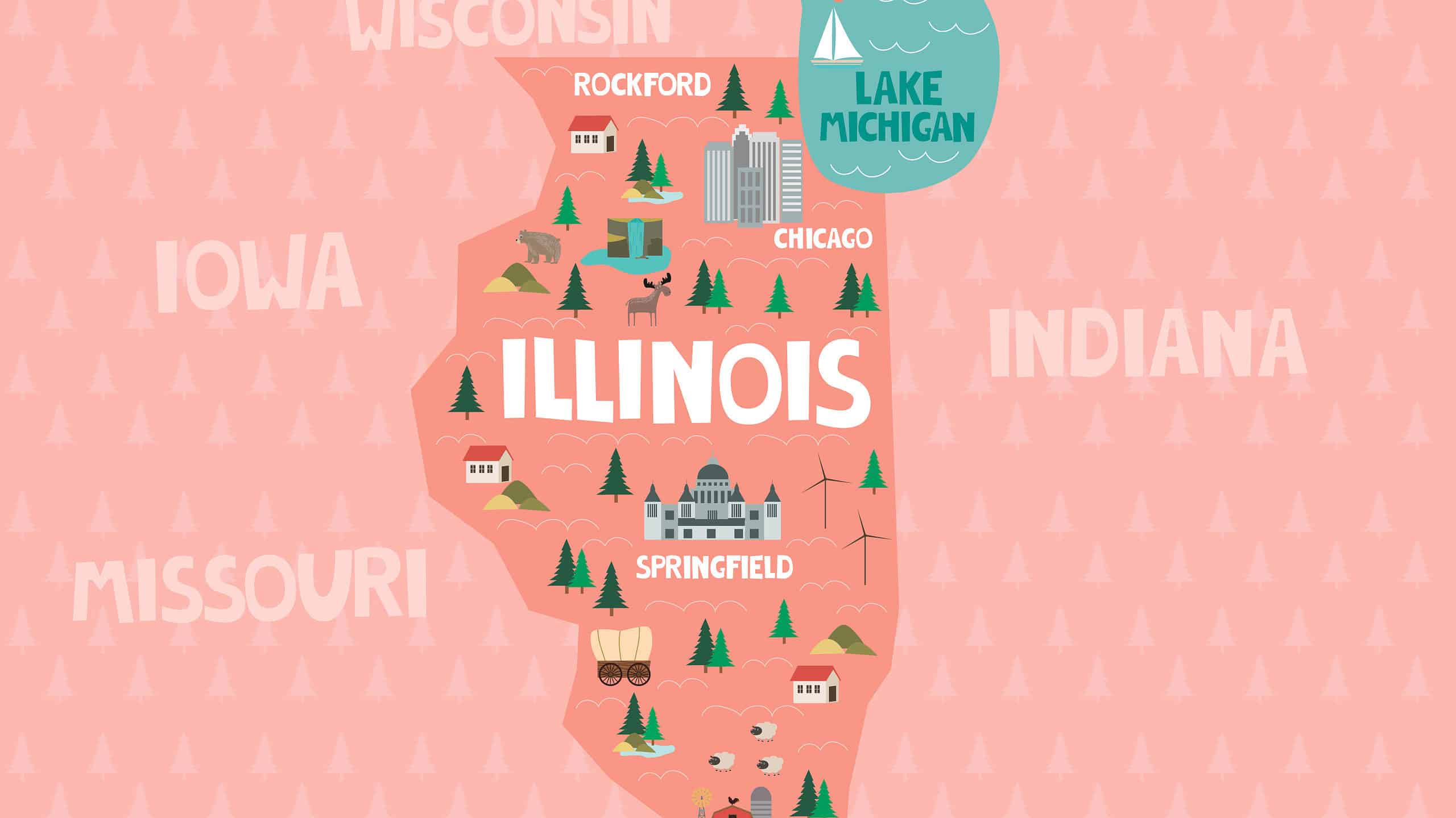Illinois has a rich history and cultural heritage that goes back to the prehistoric past. It was a place of great cities and monuments long before the arrival of European explorers and settlers. It went from an American frontier to the economic heartland of a country with global influence. In this article, we’ll explore a few of the oldest cities in Illinois to get a sample of the state’s fascinating past, present, and future.
Since definitions of “city” vary widely, we’ve chosen somewhat arbitrarily to include just places with a population of at least 1,500 people, as per the 2020 census. We avoided any ghost towns and only included interesting places you might be interested in visiting.
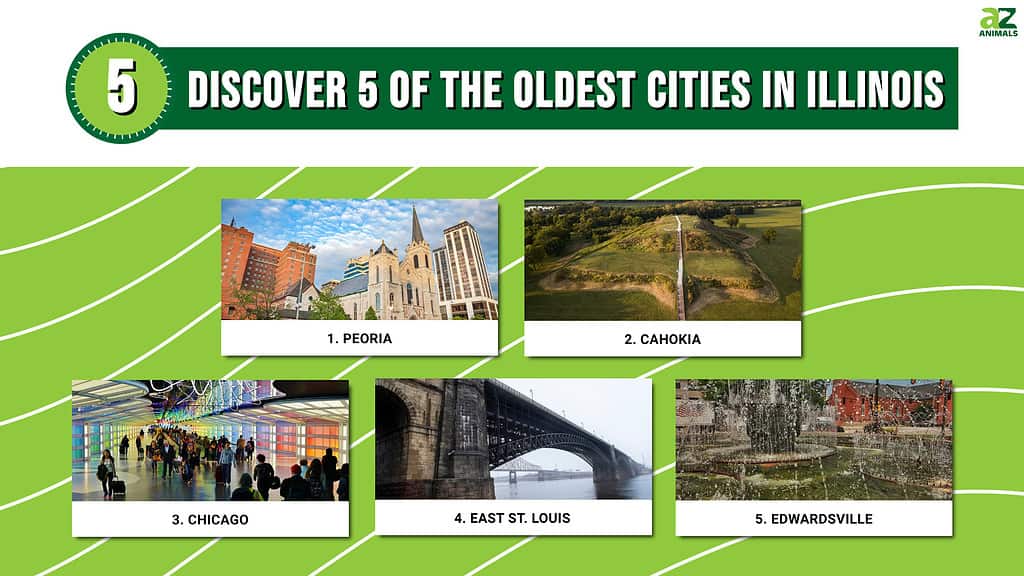
The Natural Environment of Illinois
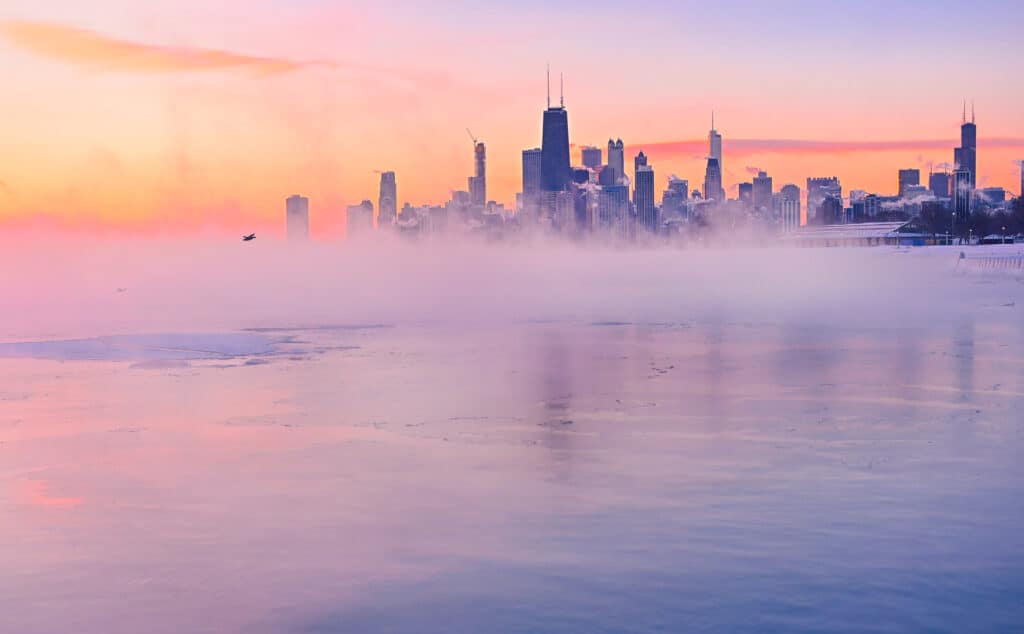
The towers of downtown Chicago rise from the early morning mist of Lake Michigan.
©Jake Hukee/Shutterstock.com
The climate zone of Illinois is classified as “humid continental,” which translates into hot summers and cold winters. The northern part of the state can get especially high levels of snowfall in winter from lake effect snow. The landscape includes prairies, forests, river bottoms and wetlands with rolling hills in the south. It’s the perfect home for large mammals like white-tailed deer, coyotes, bobcats, foxes, and black bears. Its rivers and lakes are rich with bass, bluegill, catfish, crappie, walleye, pike, carp, and muskellunge. Bald eagles, ospreys, falcons, and songbirds of all description fly overhead. And it’s the perfect home for people as well, who have built a thriving state economy based on agriculture, manufacturing, and commerce.
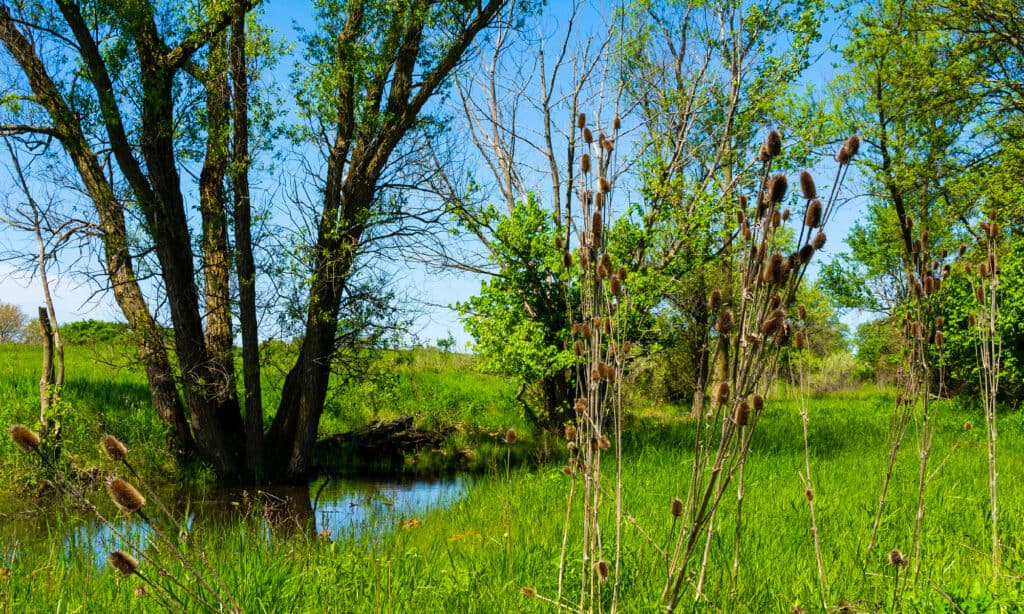
Rivers, prairies, and forests are typical landscapes in Illinois.
©iStock.com/EJ_Rodriquez
1. Peoria, 1691
French explorers founded the oldest permanent European settlement in Illinois in 1691 on the site of present-day Peoria. It was named for a local tribe of Native Americans. Today, it has grown into a city of over 113,000. Some rather random interesting historical events took place here. For example, in 1854 Abraham Lincoln spoke there to make his case for why slavery should be prohibited in the United States. Peoria became famous for its whiskey production before Prohibition. Later, it became a center for the production of heavy-duty equipment for construction, lawn care, and agriculture. And the invention of penicillin started with a humble moldy cantaloupe in Peoria!
What can you do there today? A lot of people first visit while attending an event at Peoria’s world-class convention center. Nearby you’ll find restaurants, comedy clubs, specialty stores, and coffee shops. Sports fans should check out the Louisville Slugger Sports Complex, which has 10 artificial turf bat and ball fields. Check out the riverfront museum and planetarium, the symphony orchestra, and a traditional local county fair with rides, concessions, livestock competitions, and contests. At Christmas, Peoria hosts the oldest holiday parade in the country, which has taken place every year since 1888. And in the summer, you can ride the Spirit of Peoria paddleboat on the Illinois River.
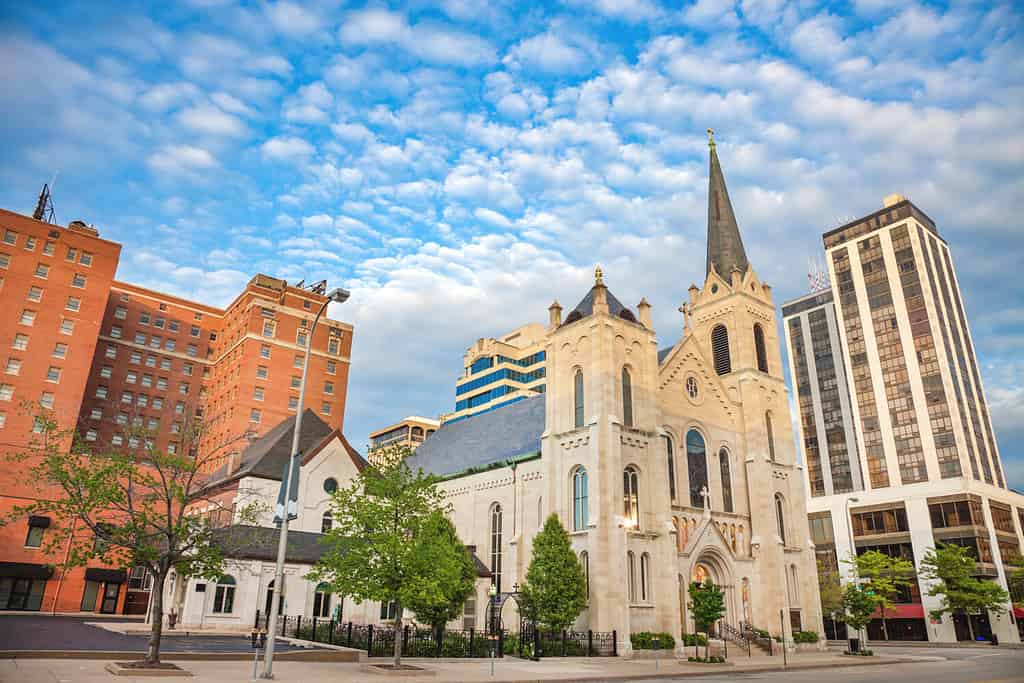
Downtown Peoria has historic architecture as well as a modern convention center and business district.
©Henryk Sadura/Shutterstock.com
2. Cahokia, 1696
Cahokia today is a city of about 12,100 people, but a thousand years ago it was nearly twice as big as the largest Native American metropolis in North America. Earthen mounds in the form of platforms or pyramids still endure in the area. French explorers established a flourishing trading settlement there in 1696, but it declined after the British took over the territory in the 7-Years War. After American independence, Lewis and Clark used Cahokia as a headquarters during their Western expedition. In very recent history, Cahokia has started a new chapter by merging with the neighboring small cities of Alorton and Centreville into a new identity as “Cahokia Heights.”
You can’t really say you’ve been to Cahokia without seeing the Cahokia Mounds State Historic Site, where there are 80 ancient earthworks. The largest is Monks Mound, which at 10 stories tall and with four terraces, is comparable in size to the Great Pyramid of Giza. The Illinois River in the area is a great place for spotting wildlife. And in town, you’ll find a variety of restaurants, bars, breweries, and pubs.

Monk’s Mound at Cahokia is the biggest earthen mound structure in North America, and is as large as the Great Pyramid of Giza.
©Matt Gush/Shutterstock.com
3. Chicago, 1780
With a 2020 population of 2.7 million, Chicago is the undisputed leading city of Illinois and the third largest city in the entire United States. Native Americans lived there for thousands of years, but the person credited as the “Founder of Chicago” was a French citizen of African (or perhaps Haitian) descent named Jean Baptiste Point du Sable. Native Americans continued living in the area as the settlement grew until they were forced to move west of the Mississippi River by the Americans after the War of 1812.
By the end of the 19th century, Chicago was the main railroad hub of the Midwest. Time zones were invented there as a way to coordinate train schedules and eventually were officially adopted by the country and the world. During World War II, Chicago was one of the country’s economic powerhouses, producing more steel in its plants than the entire United Kingdom did from 1939-1945. Chicago today is a world city with a diverse population, economy, and culture and an international travel hub.
What to Do in Chicago
Entire books have been written on all the things that can be done in Chicago. It would be faster to make a list of what can’t be done there. But if you are on a short visit, here are some suggested things you can do there:
- Be sure to eat a Chicago-style hotdog, with the works. And don’t try to put ketchup on it. It scandalizes the locals.
- Get out your debit card and go shopping along the Magnificent Mile.
- Visit the Navy Pier, go shopping, walk along the river, ride a Ferris wheel, book a river or lake cruise.
- Take an architectural tour. Chicago is a world-famous center of great architecture, and you’ll see examples of a wide variety of styles.
- Shop and eat in Chicago’s many ethnic neighborhoods, including Chicago’s Ukrainian Village.
- See the exquisite dinosaur fossil collection at the Field Museum, among the very best in the world.
- Ride to the top of the Willis Tower, the tallest skyscraper in the city, for fantastic views. Step out onto a glass-enclosed and glass-floored balcony and experience sheer terror, even if you think you’re not afraid of heights.
- And of course, who could forget Chicago’s pro sports teams: the Bears, White Sox, Cubs, and Blackhawks.
You’ll really need to make more than one trip if you’re going to do Chicago right.
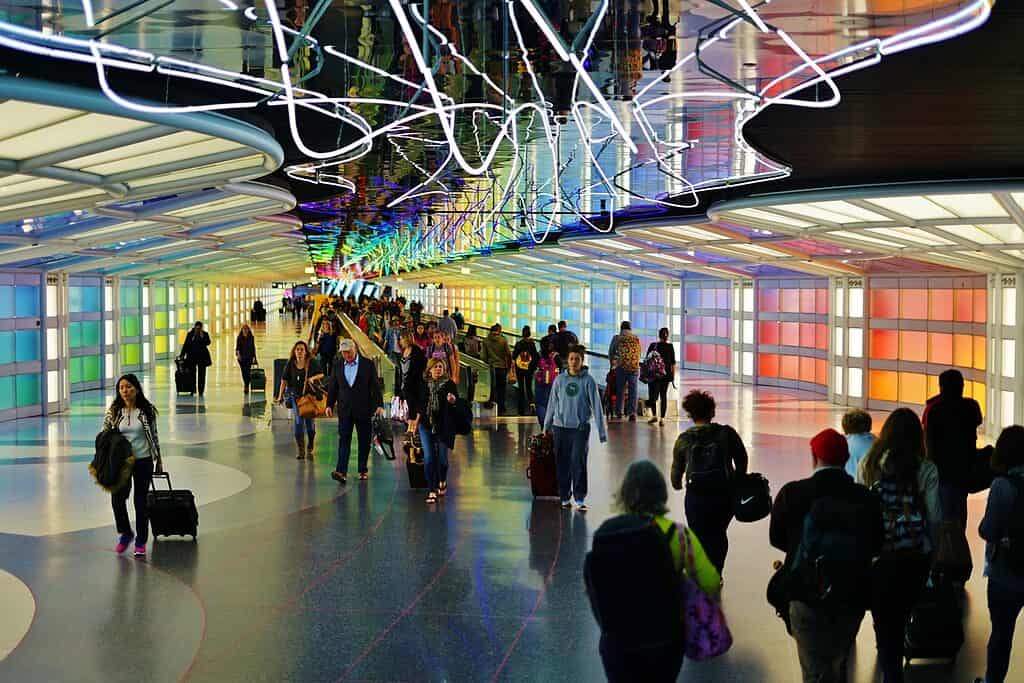
Chicago’s O’Hare Airport is one of the busiest in the world. Modern, artistic design makes walking through terminals a memorable experience.
©EQRoy/Shutterstock.com
4. East St. Louis,1797
East St. Louis lies just across the Mississippi from, you guessed it, St. Louis, Missouri. This city has approximately 18,500 people. It’s located to the south of the famous Cahokia mounds. During the construction of the Stan Musial Bridge across the Mississippi in 2010-2013, archaeological evidence was found for over 1,000 buildings and the base of a pyramid in the area, expanding estimates of how large and populated the area was in ancient times. East St. Louis started in 1797 at a spot where there was a ferry crossing, and it prospered as St. Louis grew across the river. Its economy particularly developed around stockyards and meat packing plants. By the late 20th century, the area had experienced a considerable downturn in its fortunes but since 2000 has been going through redevelopment and upgrades to its infrastructure to help it bounce back.
St. Louis boasts the 630-foot Gateway Arch, but East St. Louis has answered that with the 2009 construction of the Gateway Geyser, a fountain that shoots water 630 feet into the air once a day for 10 minutes from May through September. At the East St. Louis Mound Center, you can see 7 Indian mounds, the largest of which is 40 feet high and the size of a football field. You’ll learn about the most recent archaeological discoveries in the area. The city has a museum dedicated to dancer Katherine Dunham. And in the southeast is the Frank Holten State Recreation Area, a 1,080-acre urban park with an 18-hole golf course and facilities for fishing and other outdoor recreation. The area has two lakes and fishing is allowed from the shore or by boat.
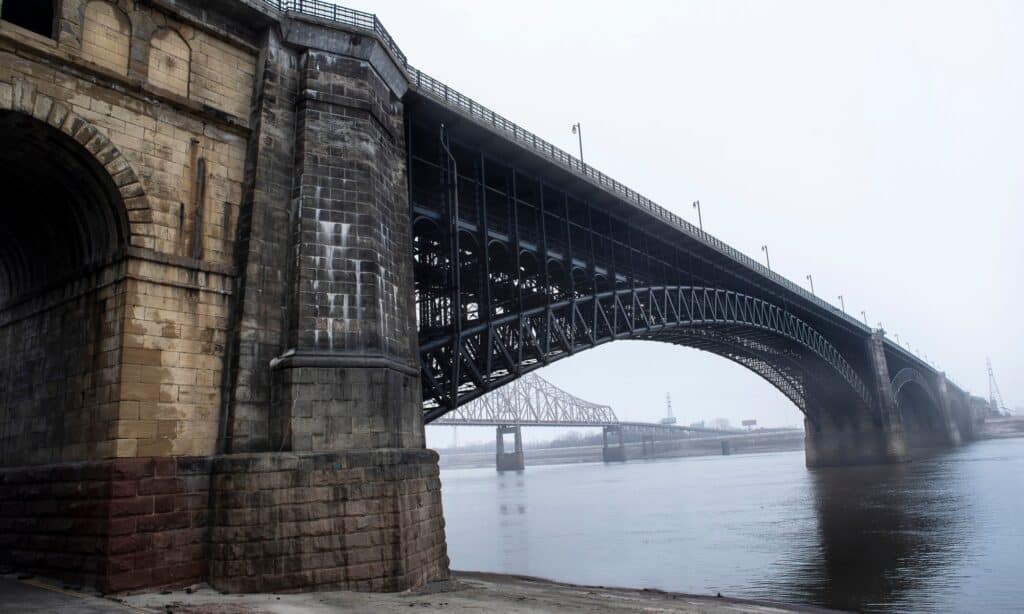
The Eads Bridge is a combined road and railway bridge over the Mississippi River connecting the cities of St. Louis, Missouri and East St. Louis.
©iStock.com/Jon Rehg
5. Edwardsville, 1805
Edwardsville, with a current population of about 27,000, had its start in 1805. It was named after the territorial governor of Illinois. The site was located on an old Native American trail that became known as Edwards Trace, running from Cahokia in the south to Peoria up north. During the Progressive Era in 1890, a St. Louis industrialist built a model village known as Leclaire just south of Edwardsville. Factory workers there were provided housing, fair wages, educational opportunities, and profit-sharing. Abraham Lincoln visited Edwardsville twice before becoming President – once as a lawyer arguing a case, and again as a speaker outside the courthouse. Edwardsville was named #3 in Family Circle‘s “Top 10 Best Towns for Families” in 2010.
Some of the features that make Edwardsville such an enjoyable city for residents and visitors include:
- 125 miles of scenic bike trails
- A wildlife preserve with indigenous Illinois flora and fauna.
- Farmers’ markets and street entertainment
- A children’s museum
- Parks, lakes, and botanical gardens
- A performance theater for concerts, theatrical productions, dance recitals, comedy acts, etc.
- The Stephenson House, reputed to be an actual haunted house.
Edwardsville sounds like the perfect location to go for a quiet little writer’s retreat / ghost-hunting expedition!
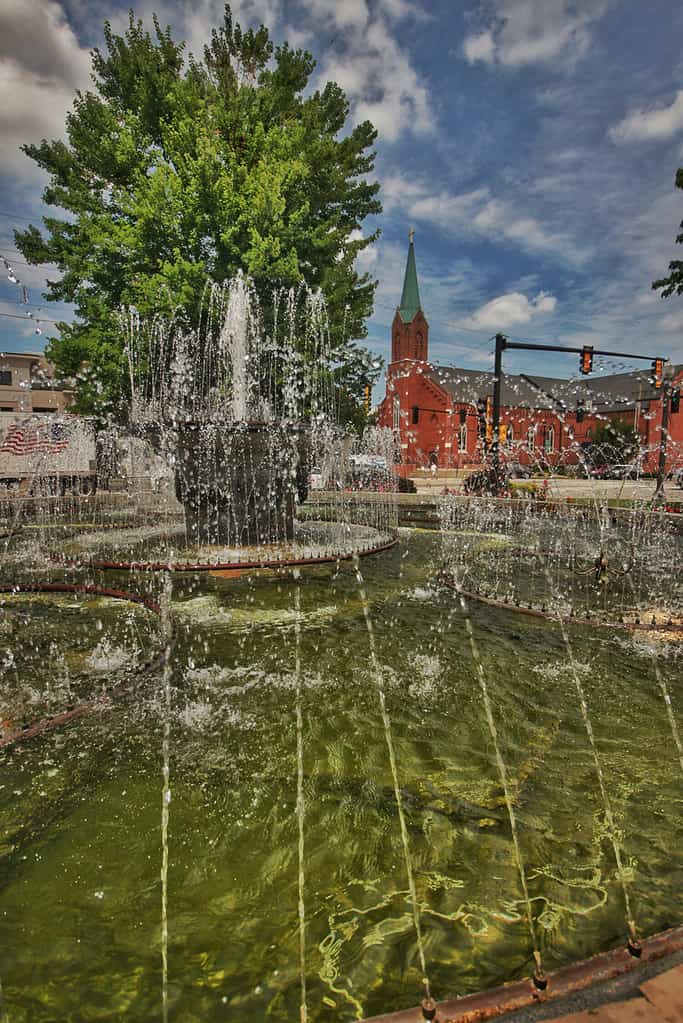
This public fountain is in Edwardsville, Illinois, one of the oldest (and possibly haunted) cities in the state.
©Jarana/Shutterstock.com
Illinois Is A Destination, Not a Layover
Chances are, if you’ve flown in a plane very many times in the U.S. you might have already been to Illinois, but possibly all you’ve seen of it is O’Hare Airport. While that can be a nice experience in itself (hey, they even have an actual gigantic dinosaur skeleton there!) there’s so much more to do in Chicago and the rest of the state. The Cahokia mounds are the remnant of a lost civilization as magnificent in many ways as ancient Egypt. All over the state are historical landmarks related to the expansion of the country, the life and career of Abraham Lincoln, the Civil War, and the Progressive Era that followed. If you love history, architecture, sports, or the outdoors, Illinois will hook you up. So, think of Illinois as a destination, not a layover.
Thank you for reading! Have some feedback for us? Contact the AZ Animals editorial team.

